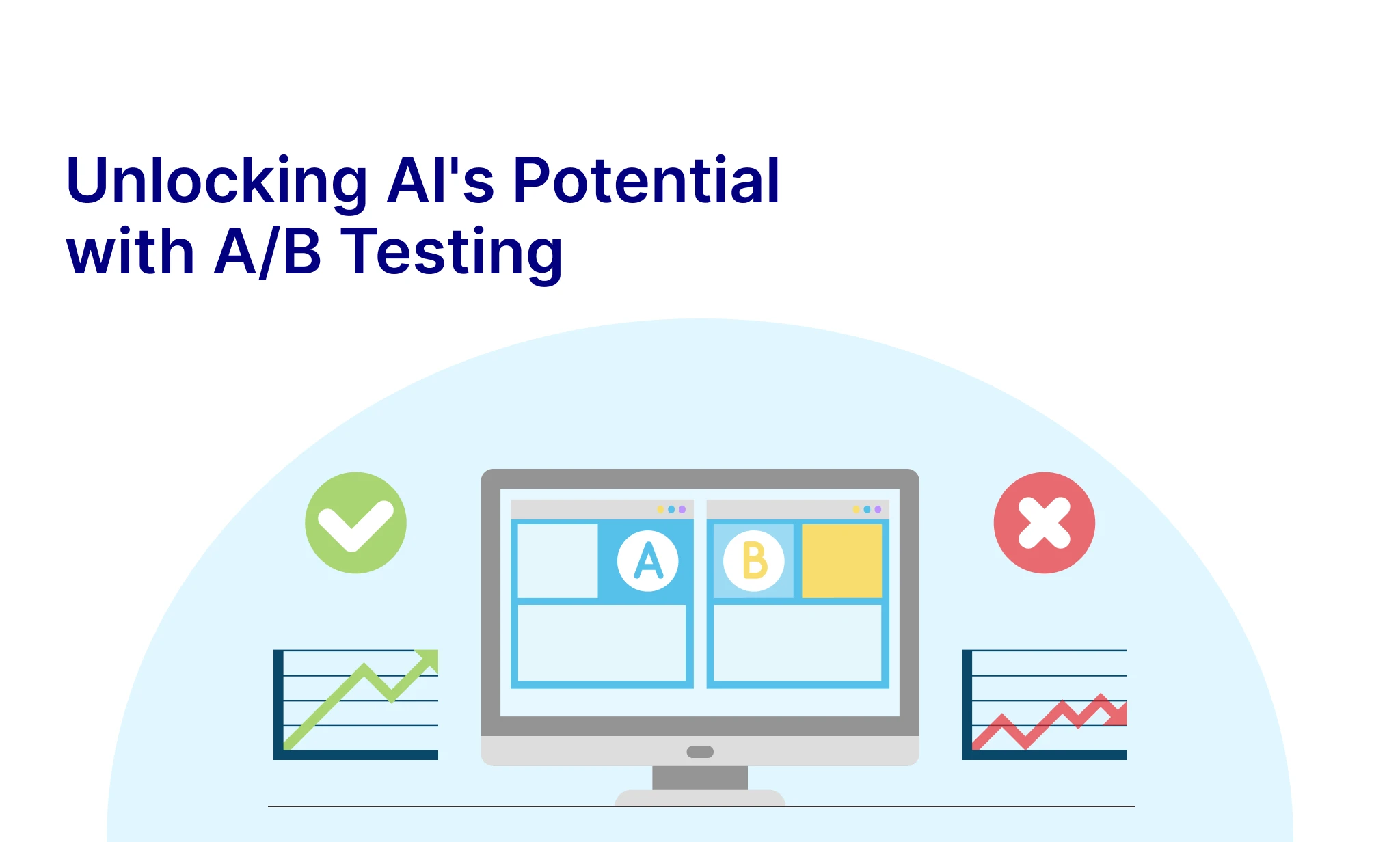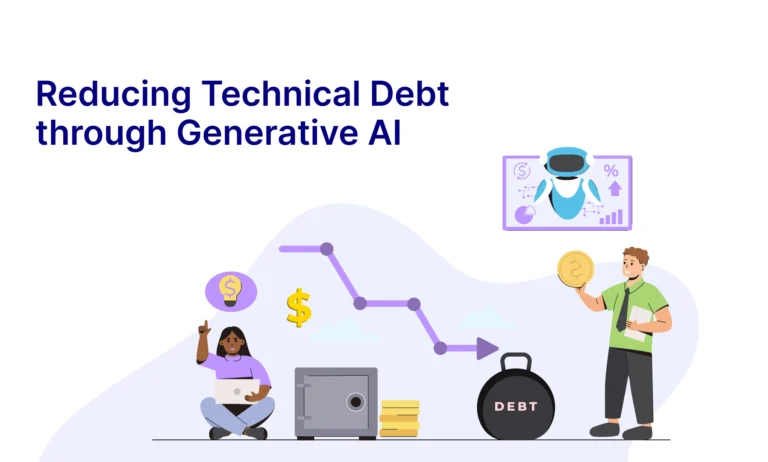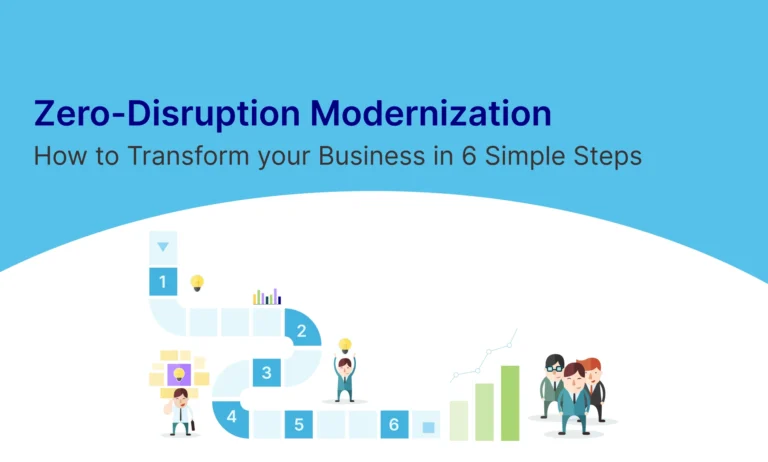Table of Contents
Abstract
A/B testing, a well-established statistical method, has been widely adopted across industries to optimize website and app performance by testing changes in real-time environments. As artificial intelligence (AI) continues to advance, A/B testing has emerged as a vital tool for refining AI models, improving user experiences, and facilitating data-driven decision-making. This whitepaper delves into the application of A/B testing in AI development, its advantages, challenges, emerging trends, and recommended practices for maximizing the effectiveness of AI-driven innovations.
Introduction
A/B testing, also known as split testing or bucket testing, involves comparing two variants of a variable, feature, or component to determine which performs better. In the realm of AI, A/B testing can be applied to various facets, from model optimization to user engagement enhancement. It is instrumental in testing assumptions, validating hypotheses, and making incremental improvements in AI systems, ensuring that each change leads to measurable benefits.
In AI, A/B testing is not limited to product front ends but can also focus on back-end systems, data pipelines, and model behaviour. Examples of its applications include:
- Model Architecture: Experimenting with different neural network configurations, hyperparameters, and learning rates to identify the most effective model.
- Data Preprocessing: Testing various data preprocessing strategies like feature engineering, normalization, and augmentation to enhance the quality of input data for models.
- Algorithm Selection: Comparing different machine learning algorithms such as gradient boosting, deep learning, and ensemble methods to discover the best-performing approach for a specific task.
- User Interface (UI) Optimization: Iteratively testing different UI components, layouts, and design elements to improve user experience and interaction with AI-powered features.
- Recommendation Systems: Fine-tuning personalization engines by A/B testing different recommendation models, filters, and content-ranking algorithms.
- AI-Driven Personalization: Testing personalization strategies, such as tailored content, product suggestions, and adaptive learning models, to improve user satisfaction.
Benefits of A/B Testing in AI
- Improved Model Performance: A/B testing enables the identification of the optimal configuration of AI models, leading to improved performance metrics such as accuracy, precision, recall, and F1-score. It helps in uncovering which model adjustments result in significant improvements.
- Enhanced User Experience: Through A/B testing of UI and UX elements, organizations can develop more intuitive, accessible, and engaging interfaces, improving overall user satisfaction with AI applications.
- Faster Time to Market: The rapid iteration and experimental nature of A/B testing allow companies to deploy improvements swiftly. By continuously testing and refining elements of an AI model, the product development cycle accelerates, leading to quicker market readiness.
- Data-Driven Decision Making: A/B testing provides empirical data to inform decisions regarding product updates, model adjustments, and algorithm changes. Decisions are no longer based on intuition but on real-world evidence generated through controlled experiments.
- Mitigation of Bias and Fairness Concerns: Randomly assigning users or data to test groups ensures that A/B testing reduces potential biases in AI models. This randomness helps create more equitable AI systems and can be used to identify unintentional biases in algorithmic outputs.
- Scalability Across Use Cases: A/B testing can be scaled to any aspect of AI model development or user engagement, allowing for continuous improvement across multiple domains and features simultaneously.
Challenges of A/B Testing in AI
- Data Quality and Quantity: AI experiments rely heavily on data, and poor data quality or insufficient quantities can lead to skewed or inconclusive A/B testing results. Ensuring data diversity, completeness, and relevance is paramount.
- Statistical Significance and Experiment Length: Achieving statistically significant results requires careful attention to sample size and test duration. In AI applications, particularly those with sparse data or long-tail distributions, it can be difficult to gather sufficient observations quickly.
- Computational Complexity: AI models are often resource-intensive, requiring considerable computational power to run multiple experiments concurrently. Cloud infrastructure and distributed computing can mitigate this, but organizations must ensure they have the necessary technical resources.
- Interference and Cross-Contamination: In live environments, interactions between test groups may influence each other (cross-contamination), leading to incorrect results. For example, if an AI model generates recommendations for one group that influence another group’s behaviour, it can distort the findings.
- Ethical and Privacy Concerns: Ethical considerations are critical when conducting A/B testing on sensitive data or in fields such as healthcare, finance, and education. Organizations must ensure transparency, fairness, and the protection of user privacy, especially when testing AI models that may directly impact individual well-being.
- Handling Multiple Variants: A/B testing typically compares two versions, but AI often involves multivariate experiments. Managing multiple test variations requires careful planning to avoid complexity and confusion in interpreting results.
- Continuous Deployment Challenges: AI systems that undergo continuous A/B testing face the challenge of deploying models without introducing regression or performance bottlenecks. Maintaining model consistency across different versions can be complex.
Emerging Trends in A/B Testing for AI
- Multi-Armed Bandit Algorithms: These algorithms provide a more sophisticated alternative to traditional A/B testing by dynamically adjusting the allocation of traffic to different variations based on real-time performance. This approach can reduce the time needed to identify a winning variant, particularly useful in AI optimization.
- AI-Driven Automation in A/B Testing: AI itself is being used to automate aspects of A/B testing, from experiment design to result analysis. AI can rapidly assess complex multivariate experiments, optimizing for multiple goals simultaneously without human intervention.
- Adaptive Experimentation: With the rise of reinforcement learning, adaptive experimentation techniques are being applied in A/B testing. Instead of conducting static tests, AI models can continuously learn and adapt from ongoing experiments, improving performance in real-time.
Best Practices for A/B Testing in AI
- Define Clear Objectives: Establish the goals of the A/B test upfront, focusing on specific metrics such as accuracy, response time, user retention, or conversion rates.
- Rigorous Experiment Design: Ensure the experiment is well-structured with clearly defined control and test groups. This helps minimize confounding variables and ensures reliable results.
- Collect a Sufficient Sample Size: To achieve statistically significant results, ensure that you have an adequate number of participants or data points. In AI, larger datasets can provide more conclusive evidence of an improvement’s effectiveness.
- Regularly Monitor Performance: Continuously monitor the performance of your A/B test to ensure that no anomalies, such as data leakage or unintended user behaviour, are skewing results.
- Analyse Results with Caution: Even when results are statistically significant, consider other factors such as long-term impact, user preferences, and model stability when making final decisions.
- Ethical Considerations: Prioritize fairness, transparency, and privacy in the design and execution of A/B tests. Especially when deploying AI models that affect sensitive areas like healthcare, hiring, or credit scoring, ethical practices should be at the forefront.
- Iterate Frequently: A/B testing is an iterative process, and no single test is conclusive. Regular testing, tweaking, and optimization should be built into the model development cycle.
- Cross-Validation with Other Metrics: Complement A/B testing results with other evaluation metrics such as cross-validation, model robustness, and user feedback to ensure holistic model performance.
Conclusion
A/B testing remains a vital tool for refining AI models and enhancing user experience. When applied strategically, it can lead to meaningful improvements across all stages of AI development, from algorithm optimization to user interaction. By adhering to best practices, addressing challenges, and keeping an eye on emerging trends, organizations can ensure they are using A/B testing to its full potential, driving continuous innovation and delivering better results in AI-driven applications.








